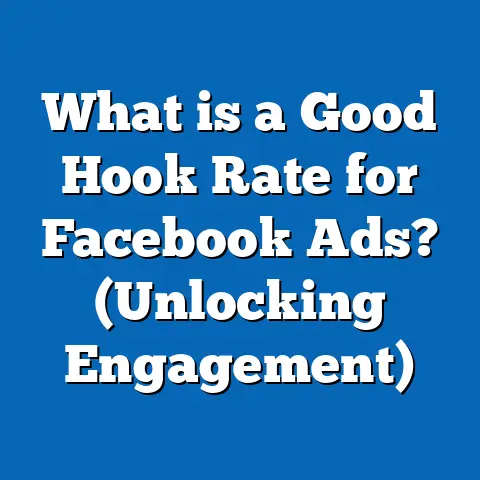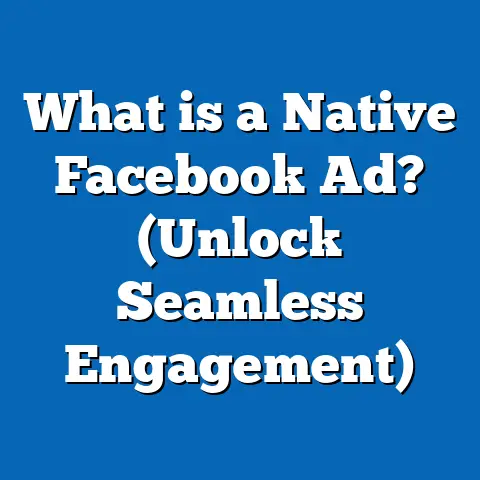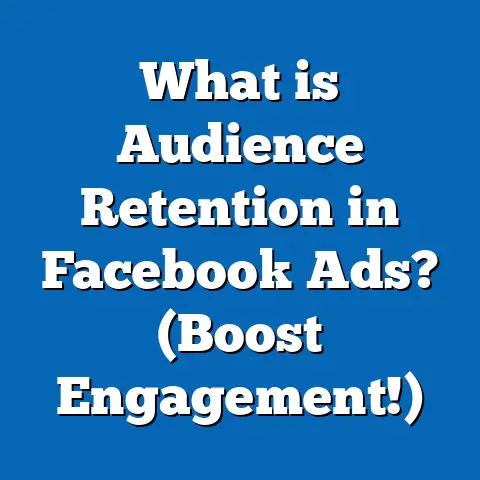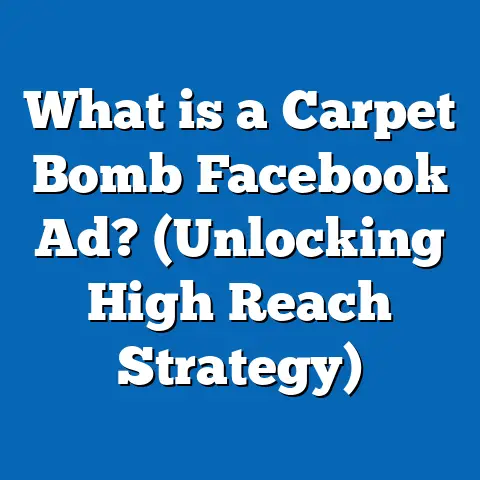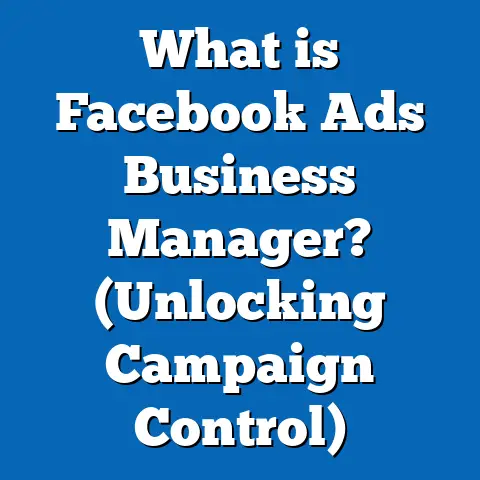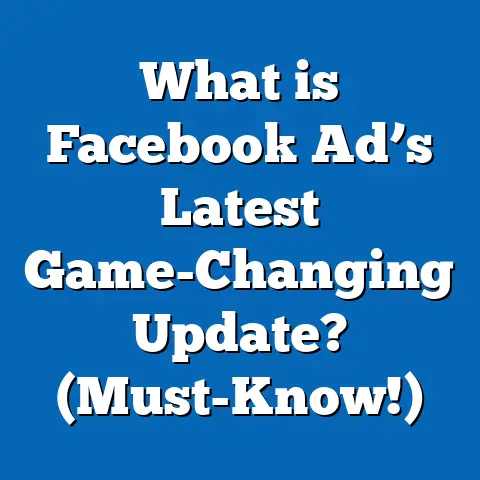What is a Home Ownership Scheme? (Unlocking Facebook Ads)
Introduction: Unlocking the Power of Home Ownership Schemes for Your Facebook Ads
Imagine a city where owning a home is a dream for many but a reality for few. The soaring property prices make it nearly impossible for low- and middle-income families to step onto the property ladder. Governments around the world recognize this problem and introduce Home Ownership Schemes (HOS) — programs designed to provide affordable housing options to eligible citizens.
For marketers, promoting these schemes effectively is essential to ensure the right people find out about these opportunities and take action. Facebook Ads offer an unparalleled platform to reach millions with precision targeting and cost-efficiency. But how can marketers unlock this potential fully? How can you craft campaigns that convert and truly make a difference?
Understanding Home Ownership Schemes: The Foundation
What Is a Home Ownership Scheme?
A Home Ownership Scheme is a government initiative aimed at making homeownership affordable for groups who might otherwise be priced out of the market. By offering subsidized housing or attractive financing options, these schemes help bridge the gap between rental housing and private market ownership.
Why Are Home Ownership Schemes Important?
The importance of HOS lies in their social and economic impact:
- Social Stability: Owning a home fosters community ties and personal stability.
- Economic Development: Boosts construction industry, local businesses, and overall GDP.
- Reduced Housing Inequality: Provides access for lower-income groups.
- Long-Term Wealth Building: Enables families to build assets over time.
Common Types of Home Ownership Schemes
| Type | Description | Examples |
|---|---|---|
| Subsidized Sale Flats | Homes sold below market price with government subsidies | Hong Kong HOS, Singapore HDB |
| Shared Equity Programs | Government retains part ownership; buyer pays reduced price | UK Help to Buy Shared Ownership |
| Low-Interest Loans | Government offers loans with below-market interest rates | USA HUD Section 184 |
| Rent-to-Own | Rent paid contributes partly toward eventual ownership | Various state-level programs |
Eligibility Criteria Overview
Governments usually impose eligibility criteria focusing on:
- Income limits: Ensuring assistance goes to those who need it most.
- Residency or citizenship status: Typically limited to citizens or permanent residents.
- Family status: Priority often given to first-time homeowners, newlyweds, or families with children.
- Asset limits: To prevent wealthier individuals from accessing subsidized housing.
Restrictions Associated With Home Ownership Schemes
- Resale restrictions: Buyers may be required to hold the property for a certain period (e.g., 5 years) before selling it on the open market.
- Usage restrictions: The property must be used as the primary residence, not rented out.
- Eligibility reviews: Buyers may need to periodically confirm they still meet criteria.
Deep Dive: Global Examples and Their Impact
Hong Kong Home Ownership Scheme (HOS)
Launched in 1978, Hong Kong’s HOS has provided affordable housing to hundreds of thousands by offering flats at discounts up to 30%. According to the Hong Kong Housing Authority, HOS flats accounted for nearly 30% of residential sales in 2023.
Key Data:
- Over 200,000 families have benefited since inception.
- Average price discount: 25%-30% below market.
- Resale restrictions of 5 years after purchase.
Singapore’s Housing Development Board (HDB) Flats
Singapore’s HDB flats house over 80% of its resident population, making it one of the most successful public housing programs globally. The flats are sold at up to 40% below market prices with strict eligibility criteria.
Statistics:
- Over 1 million HDB flats built since the 1960s.
- Median price discount: ~35%.
- Strong community facilities integrated into estates.
UK Help to Buy Scheme
The UK’s Help to Buy program offers shared equity loans allowing buyers to purchase homes with as little as 5% deposit.
Impact:
- Over 270,000 homes purchased since launch in 2013.
- Average loan amount covers 20% of purchase price.
- Aimed at first-time buyers struggling with deposits.
United States HUD Section 184 Loan Guarantee Program
This program targets Native American families providing low-interest loans guaranteed by HUD.
Impact Data:
- Loan default rates under 5%, well below average.
- Facilitated homeownership in remote and underserved areas.
Why Facebook Ads Are Ideal for Promoting Home Ownership Schemes
Facebook’s Massive Reach and Granular Targeting
With over 3 billion monthly active users worldwide (Meta Q4 2024 report), Facebook allows marketers unparalleled reach. More importantly, its targeting tools let you pinpoint exactly who should see your ads.
Key targeting features include:
- Demographic filters: Age, income, education level, relationship status.
- Geographical targeting: Down to zip code or neighborhood level.
- Interest categories: Real estate, mortgages, family planning.
- Behavioral targeting: Users who have searched for homes or related topics.
- Custom and Lookalike Audiences: Upload lists of prospects or create audiences similar to your best customers.
Cost Efficiency Compared to Traditional Media
Traditional advertising for housing schemes—billboards, newspapers, TV—often come with high costs and broad reach that lacks precision.
Facebook advertising budgets can start as low as $1 per day. According to WordStream’s latest data (2024):
- Average cost per lead (CPL) in real estate campaigns on Facebook: $10-$50.
- Average click-through rate (CTR): 0.90%, slightly above industry average.
- Conversion rates can be optimized above 10% with proper funnel setup.
Real-Time Optimization and Analytics
Facebook Ads Manager provides detailed insights:
- Campaign performance by demographic segments.
- Ad placement effectiveness (Feed vs Stories vs Marketplace).
- Conversion tracking through Facebook Pixel integration on landing pages.
This data allows marketers to adjust targeting, messaging, and budget dynamically for optimal results.
Breaking Down Facebook Ad Concepts for Home Ownership Promotion
Understanding Facebook Ad Objectives
Choosing the right campaign objective is crucial:
| Objective | Best Use Case |
|---|---|
| Lead Generation | Collect inquiries directly within Facebook |
| Traffic | Drive visitors to your scheme info website |
| Brand Awareness | Increase recognition of your housing program |
| Engagement | Boost interaction with posts or videos |
| Conversions | Optimize for application submissions |
Facebook Ad Formats Explained
Each ad format offers unique benefits:
- Image Ads: Use high-quality visuals showing homes or happy families. Simple yet effective.
- Video Ads: Perfect for explaining scheme details clearly and engagingly in under 2 minutes.
- Carousel Ads: Showcase multiple housing options or highlight scheme benefits step-by-step.
- Lead Generation Ads: Collect contact details without requiring users to leave Facebook.
- Dynamic Ads: Automatically show personalized housing options based on user browsing behavior.
Facebook Pixel: Tracking Beyond Clicks
Facebook Pixel is a small piece of code you add to your website. It tracks:
- Page views
- Form submissions
- Button clicks
- Purchases or applications
Pixel data feeds back into Facebook’s algorithm to optimize ad delivery toward people more likely to convert.
Crafting Your Facebook Ads: Step-by-Step Process
Step 1: Audience Research and Segmentation
Use existing data sources:
- Government databases (where accessible)
- Past campaign analytics
- Market research reports on eligible demographics
Segment audiences into groups such as:
- First-time homebuyers aged 25–34
- Families planning upgrades aged 35–45
- Young couples preparing for children
Step 2: Messaging That Resonates
Key messaging principles:
- Focus on affordability and security.
- Highlight government backing — builds trust.
- Use simple language avoiding jargon.
Example headline ideas:
- “Your Dream Home Within Reach — See if You Qualify Today”
- “Affordable Government Homes Available Now”
- “Start Building Your Future with Our Home Ownership Scheme”
Step 3: Designing Visual Assets
Tips for visuals:
- Use authentic images showing diverse families.
- Include infographics explaining eligibility or process steps.
- Ensure mobile-friendly designs — over 70% of Facebook traffic is mobile.
Step 4: Setup Campaigns in Facebook Ads Manager
Select campaign objective → Define audience → Choose placements (automatic recommended) → Set budget → Upload creatives → Add URL or lead form → Launch.
Step 5: Implement Facebook Pixel & Conversion Tracking
Place Pixel code on:
- Landing pages
- Application forms
- Thank-you/confirmation pages
Test Pixel functionality before campaign launch using Facebook’s Pixel Helper tool.
Case Studies: Real-Life Success Stories from Around the World
Case Study 1: Singapore HDB Flat Launch Campaign
Background: A new batch of HDB flats was launched in 2023 targeting young families.
Strategy:
- Used video ads explaining eligibility criteria.
- Ran lead generation ads capturing phone numbers and emails.
- Retargeted website visitors with carousel ads showing available units.
Results:
| Metric | Outcome |
|---|---|
| Reach | 600,000 users |
| Leads generated | 4,500 inquiries |
| Cost per lead (CPL) | $2.50 |
| Conversion rate | 15% application |
Insights: Retargeting increased lead volume by 28%. Video engagement was twice that of static images.
Case Study 2: UK Help to Buy Awareness Campaign
Background: A regional council wanted to increase awareness among first-time buyers.
Strategy:
- Focused on brand awareness objective with carousel ads.
- Targeted lookalike audiences based on existing applicants.
- Used Messenger chatbots for instant answers.
Results:
| Metric | Outcome |
|---|---|
| Impressions | 1 million |
| Messenger interactions | 7,800 |
| Website traffic | +35% during campaign |
| New applications | +20% from baseline |
Insights: Chatbots reduced inquiry response time by over 60%, improving user satisfaction and conversion rates.
Advanced Techniques for Seasoned Marketers
Lookalike Audiences for Scaling Reach
Create audience profiles based on your highest-engaged users or converted leads. Facebook analyzes millions of data points to find new users with similar traits — increasing campaign efficiency by up to 30%.
Using Dynamic Ads for Retargeting Visitors
Dynamic ads automatically display listings a user viewed but didn’t apply for, reminding them gently while providing direct links back to application portals.
Multi-Touch Attribution Modeling
Use Facebook Attribution tools combined with Google Analytics to understand how different ads contribute across the customer journey — from awareness through conversion.
Chatbot Integration via Messenger Ads
Chatbots handle FAQs instantly:
- Eligibility checks
- Application steps
- Document requirements
This reduces drop-off caused by unanswered questions and keeps prospects engaged.
Comparing Facebook Ads with Other Digital Advertising Platforms in Real Estate Marketing
Google Ads vs Facebook Ads
| Feature | Google Ads | Facebook Ads |
|---|---|---|
| User Intent | High (search queries indicate intent) | Medium (interest-based targeting) |
| Cost per Click | Higher ($2-$6 average in real estate) | Lower ($0.50-$2 average) |
| Visual Formats | Limited (text-based search ads) | Rich visual options (images/videos) |
| Audience Targeting | Keywords & location-based | Demographics, interests, behaviors |
Google Ads excel when users actively look for housing info, while Facebook captures interest earlier in the buying journey through engaging content.
Instagram Ads Integration
Instagram is owned by Meta; using Instagram alongside Facebook expands reach particularly among millennials and Gen Z who prefer visual content. Instagram Stories ads have shown higher engagement rates in real estate marketing (up to +15%).
Practical Tips & Best Practices for Your Campaigns
- Use Clear Calls-to-Actions (CTAs): Direct users what to do next — “Check Eligibility,” “Apply Now,” “Learn More.”
- Leverage Testimonials and Success Stories: Social proof builds trust especially for government programs.
- Create Educational Content: Use carousel ads or videos explaining complicated eligibility steps simply.
- Optimize Landing Pages: Fast loading times, mobile-friendly, minimal form fields improve conversion rates significantly.
- Segment Audiences & Personalize Messaging: Tailor messages based on demographics and behaviors.
- Test Frequently: Run A/B tests on headlines, images, ad copy, audiences every 1–2 weeks.
- Monitor & Adjust Budgets Dynamically: Increase spend on high-performing ads; pause low performers quickly.
- Retarget Website Visitors: Use custom audiences from your website traffic for reminder ads.
- Use Offline Data Integration: If possible, upload offline leads back into Facebook Custom Audiences to re-engage warm leads.
- Comply with Privacy Laws: Ensure all data collection complies with GDPR, CCPA where applicable.
Key Statistics Recap for Quick Reference
| Statistic | Value |
|---|---|
| Monthly active users on Facebook | Over 3 billion |
| Average CTR for real estate ads on Facebook | Approx. 0.90% |
| Average CPL for real estate campaigns | $10-$50 |
| Percentage of Singapore population in HDB | Over 80% |
| Conversion rate improvement using lookalikes | Up to +30% |
| Video engagement increase over static images | +40% |
| Cost per lead achieved in case studies | As low as $2.50 |
Final Takeaways: Unlock Success with Home Ownership Scheme Campaigns on Facebook
Home Ownership Schemes are powerful tools governments use to improve social equity through affordable housing solutions. For marketers tasked with promoting these schemes, leveraging Facebook Ads offers unmatched advantages in reach, targeting precision, cost efficiency, and optimization capabilities.
By understanding both the nuances of home ownership initiatives and mastering Facebook advertising tools—from audience segmentation and creative design to advanced retargeting—you can create campaigns that not only generate leads but also help families secure their dream homes.
Next Steps For Marketers & Business Owners
- Conduct deep audience research specific to your housing scheme demographics.
- Develop compelling ad creatives focused on scheme benefits and eligibility clarity.
- Set up comprehensive tracking using Facebook Pixel for conversion optimization.
- Continuously analyze campaign performance data and adjust strategies accordingly.
- Explore advanced tools like lookalike audiences, dynamic ads, and chatbots for maximum engagement.
- Combine Facebook campaigns with complementary channels like Google Ads or Instagram for holistic outreach.
Appendix: Sample Ad Copy Templates for Home Ownership Schemes
Template A – Lead Generation Ad Copy
Headline:
Affordable Government Homes Available Now!
Body Text:
Dreaming of owning your own home? Our Home Ownership Scheme offers flats at prices up to 30% below market value. Find out if you qualify today — no hidden fees or complicated paperwork!
Call-to-action (CTA):
Check Eligibility
Template B – Video Ad Script Outline
Opening Scene:
Happy family moving into their new apartment.
Voiceover/Text Overlay:
“Owning a home is within your reach.”
Middle Scene:
Explain eligibility criteria briefly with bullet points.
Closing Scene:
Call to action with website URL and phone number.
References & Sources
- Meta Q4 2024 Earnings Report
- Hong Kong Housing Authority Annual Report 2023
- Singapore HDB Statistics Portal
- UK Government Help to Buy Program Data
- WordStream Digital Advertising Benchmarks Report 2024
- HUD Section 184 Program Summary
- Google Analytics & Facebook Attribution Tool Data

